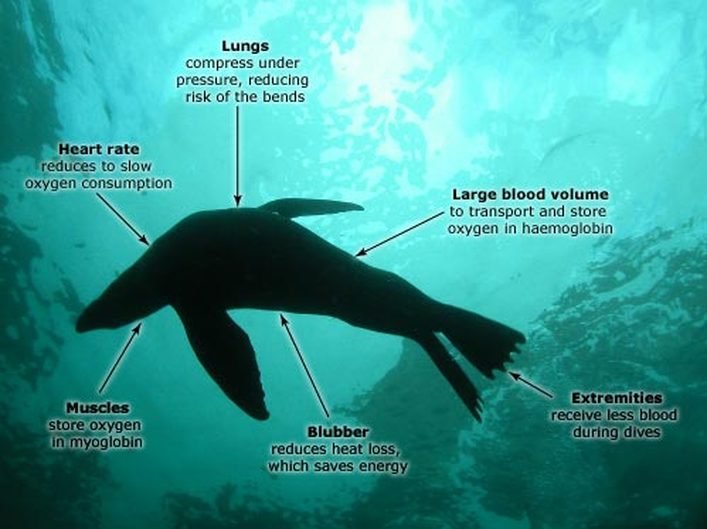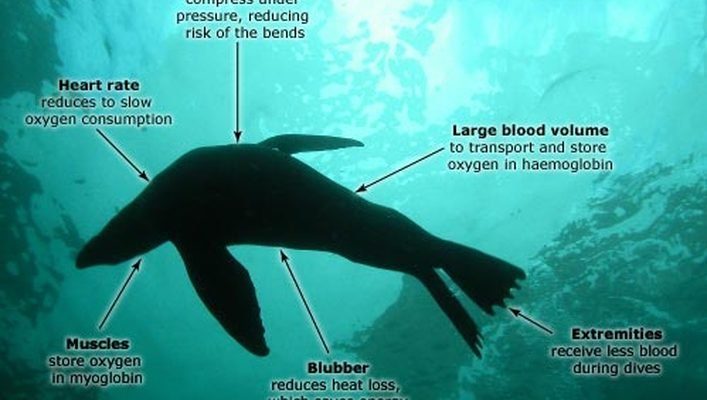
Just like a well-designed remote control helps you navigate your favorite shows with ease, elephant seals have developed specific adaptations that enhance their survival in the ocean. From their streamlined bodies to their unique breathing techniques, every feature plays a part in their underwater success. In this article, we’ll explore the various adaptations of the elephant seal that allow them to thrive and even dominate their aquatic environment.
Streamlined Bodies for Efficient Swimming
One of the most striking features of the elephant seal is its body shape. These animals have a *streamlined silhouette*, which reduces drag as they swim. Think of it like a sleek sports car cutting through the wind. Their bodies are designed to slip through the water effortlessly, which is crucial when they’re chasing prey or escaping predators.
The shape of their bodies isn’t just about looks. It allows them to swim at astonishing depths, often reaching over 5,000 feet in search of food. That’s like diving down the height of the Empire State Building two and a half times! Their large front flippers help them steer, while their powerful tails propel them forward. Together, these features make them highly efficient swimmers—a true marvel of evolution.
Aside from their shape, elephant seals also rely on their *blubber* for buoyancy and warmth. This thick layer of fat not only helps them stay afloat but also insulates them against the frigid temperatures of the deep ocean. When they dive, their streamlined bodies and buoyancy work hand-in-hand to ensure they can move quickly and maintain energy efficiency.
Intelligent Breathing Techniques
Breathing is essential for any animal, but elephant seals have developed some impressive techniques to maximize their time underwater. They hold their breath for up to two hours while diving, which is quite a feat! You might be wondering how could they possibly do that. It all comes down to their ability to slow their heart rate and redirect blood flow.
When they dive, elephant seals can lower their heart rate from around 100 beats per minute to about 20. This *bradycardia* helps conserve oxygen while they’re submerged. Imagine trying to hold your breath while running—you’d tire out quickly! But these seals are pros, ensuring their bodies use every bit of oxygen efficiently.
Moreover, their large lungs allow them to take in significant oxygen before diving. It’s like filling a big tank before heading out on a long road trip. This combination of features means they can explore the ocean depths longer than most other marine mammals, making them top-notch scavengers and hunters.
Advanced Sensory Adaptations
While swimming in the dark depths of the ocean, vision isn’t always the best way to find food, right? Elephant seals have adapted their senses to navigate effectively underwater. Their eyes are designed to see well in low light. The lens can adjust more than those of humans, allowing them to focus better on objects at different depths.
But there’s more! Elephant seals also have an excellent sense of hearing. They can detect sounds over long distances, which is particularly useful for communicating with each other or hunting for prey. It’s almost like they have built-in sonar, much like bats. When they hunt, they can pick up on the sounds their prey makes, even when it’s miles away.
Their whiskers, or vibrissae, are also incredibly sensitive. These specialized hairs help them detect changes in water currents and the movement of nearby marine life. It’s a bit like having a superpower—being able to sense even the slightest vibrations underwater, making it easier for them to locate fish and squid.
Efficient Energy Use
Another remarkable adaptation of the elephant seal is its ability to conserve energy during dives. When they swim, they often glide or “free-fall” back to the surface. This technique reduces the amount of energy they burn, similar to how a cyclist coasts downhill to save strength for the next uphill climb.
They’ve mastered the art of using their buoyancy to their advantage. By controlling their descent and ascent, elephant seals can travel long distances without exerting too much effort. This capability makes them incredibly efficient hunters and allows them to cover vast areas while foraging for food.
Additionally, their metabolism plays a role in how they store energy. Elephant seals can go for long periods without eating, thanks to their ability to store fat reserves. This is crucial for their long dives and extensive swimming journeys. When it comes time to feast, they can consume large quantities of fish and squid, refueling their bodies for the next adventure.
Social Behaviors and Adaptations
Unlike some solitary marine mammals, elephant seals are social creatures, especially during breeding season. Their *social structure* also aids in their survival. By congregating in large numbers on breeding beaches, they create a sense of community that helps protect against predators. Think of it as a group of friends sticking together for safety in a bustling area.
Moreover, their vocalizations play a significant role in social interactions. Male elephant seals have a booming call that can be heard miles away, which they use to attract females or establish dominance over other males. Their vocal abilities are essential in coordinating during group activities, making it easier for them to communicate while foraging or resting.
On land, you might witness playful interactions among pups and adults. These social behaviors aren’t just for fun; they also help young seals learn vital survival skills, preparing them for life in the ocean once they’re weaned.
The elephant seal is a testament to nature’s creativity and adaptability. From their efficient swimming techniques to advanced sensory abilities, each trait is finely tuned for underwater life. It’s incredible how these majestic creatures have developed a suite of adaptations that allows them to thrive in an environment that can be both beautiful and harsh.
So, the next time you spot an elephant seal lounging on a beach or gliding through the sea, take a moment to appreciate the intricate ways they’ve evolved to conquer the ocean depths. Just like that trusty remote you rely on to navigate your favorite shows, elephant seals have the built-in features they need to navigate their watery world effortlessly. Isn’t it amazing how life finds a way to adapt and thrive in every environment?

